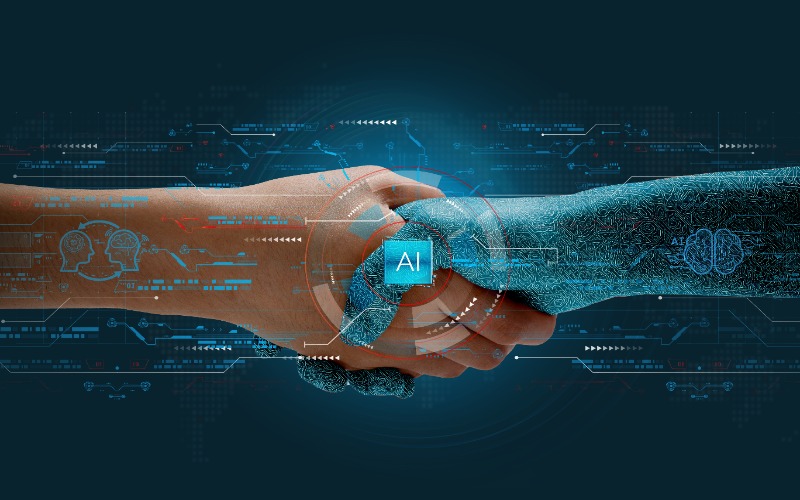As technology advances at an unprecedented pace, collaboration between humans and machines emerges as a transformative force in modern workplaces. Artificial intelligence (AI), machine learning (ML), and automation are not just tools but rather catalysts for revolutionizing industries, amplifying productivity, and unlocking innovative solutions. This dynamic partnership between humans and machines is reshaping job roles, demanding new skill sets, and redefining the essence of work. Organizations that adeptly integrate these technologies are witnessing a profound shift in efficiency and decision-making.
This transition, however, has its challenges. Companies must strive to create environments where humans and machines can harmoniously coexist, leveraging each other’s unique strengths to achieve optimal outcomes. This necessitates a commitment to training and development, a reimagining of traditional workflows, and, most importantly, an inclusive approach that values the input and concerns of all stakeholders.
A Shift in the Landscape
AI has radically transformed every industry because, for the first time in human history, there is now a tool that can think and reason almost independently. Beyond the growth of the internet, without which there would be nothing for these AI models to train on, the powerful connection between AI and humans is also rooted in a fundamental human trait: people actively seek ways to make their lives easier. As a result, AI’s multiple capabilities allow people to do just that.
In 2023, Adobe surveyed 6,049 digital workers across five countries—the United States, the United Kingdom, Australia, India, and Japan—and included rank-and-file employees and senior leaders using digital technologies. Ninety percent of employees believed generative AI (GenAI) would help them work faster, integrate information from different sources in less time, and reduce time spent on difficult, boring, or tedious work. In addition, 79 percent of business leaders said they expect their employees will use generative AI often, with 39 percent anticipating that employees will use generative AI daily. Seventy-six percent of those leaders said they are ready to adopt GenAI into their workflows.
Workplace Benefits of Human/AI Collaboration
Companies are eager to embrace AI because of the core efficiencies that can be achieved, including taking over mundane and repetitive tasks. GenAI can also offer predictions that allow people to prevent mistakes before they happen and bridge the gap between higher and less-experienced employees to amplify results.
In the entertainment industry, for instance, tools like ScriptBook analyze screenplays to predict box office success and provide feedback. Screenwriters use these insights to refine their scripts, balancing data-driven optimization with human creativity, which is what human brains are best hard-wired for—creative problem-solving. This type of AI/ human collaboration is akin to being on steroids. It can make a company faster, more intelligent, and more efficient.
Integration is critical to achieving this. GenAI and ML technologies are next-token predictors, lowering the reliance on human overhead. They can take partial data, such as words, voice, or image fragments, and predict what comes next. This amalgamation has become more widespread in most workplaces as companies already use emails, text, and voice messages to communicate with customers, colleagues, and other organizations.
For example, speaking at a 2023 industry roundtable called AI and the Future of Design, Patrick Schumacher, principal architect at Zaha Hadid Architects, explained how the company uses GenAI to come up with ideas by using DALL•E 2, Midjourney, and Stable Diffusion to generate complex geometric shapes and optimize building structures. Human architects then refine these AI-generated models, combining creative vision with technical efficiency.
Ensuring the Right Skill Sets
Before undertaking any of these tasks, companies must invest in employees and ensure they have the required skill sets. Employees need to understand how to classify, predict, or generate something with AI via the relatively new discipline of prompt engineering, use AI to summarize their work and understand and clean the data they are using. In addition, it’s essential for workers to adopt first-principles thinking, identify the most critical parts of a problem, and then break it down into its separate parts.
Because AI will eventually replace the entry-level knowledge worker, industries are already embracing that trend. Companies such as Microsoft Office 365 and Google Workspace, among others, now include AI assistant programs in their software.
Overcoming Obstacles
There are technological obstacles for companies to overcome to implement this collaboration between humans and AI effectively. The most significant obstacle many companies overlook is the cultural aspect, namely, resistance to change.
As Ogilvy Asia AI Creative Director Jaz Lee noted, “There are a lot of concerns surrounding AI and how it can take away jobs from the human workforce, but the truth is, that will never happen. AI can’t replace humans, and vice versa. Both can play strong, complementary roles with one another, so what we need right now is to co-exist with one another, which we haven’t quite nailed just yet. And that uncertainty of where we stand is where the fear stems from.” The reality is that jobs are being redefined, and employees will have new, more advanced roles and responsibilities.
Among the more pressing technological issues for companies to address is data, particularly when it comes to small businesses. While AI can quickly process and analyze large volumes of data and identify patterns humans might miss, that data is often complex and complicated. Humans can interpret and contextualize that data, but they still need to apply critical thinking when making decisions based on that AI-generated data, which will still need to be cleaned up.
The Big Picture
The key to a seamless melding of AI and human interaction is understanding that the relationship to a tool humans invented is changing for the first time in history—it’s not a tool with instructions. Instead, it’s a collaborator or an assistant. With that in mind, companies can move forward and learn how to work in concert with AI while humans simultaneously adapt how they reason and think creatively. There is no reason to be starry-eyed about how incredible AI is, just as there is no reason to fear it. That’s because this new era is not simply about how machines can collaborate with humans but how humans can adapt, change, and become better leaders in collaboration with AI.











